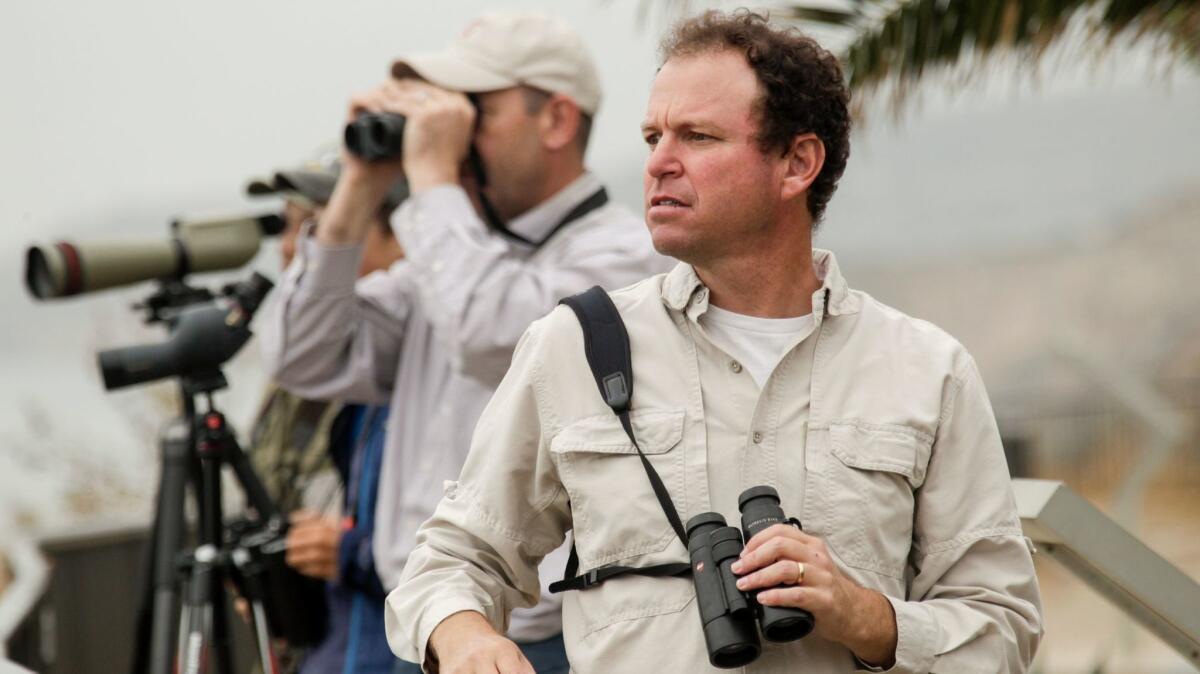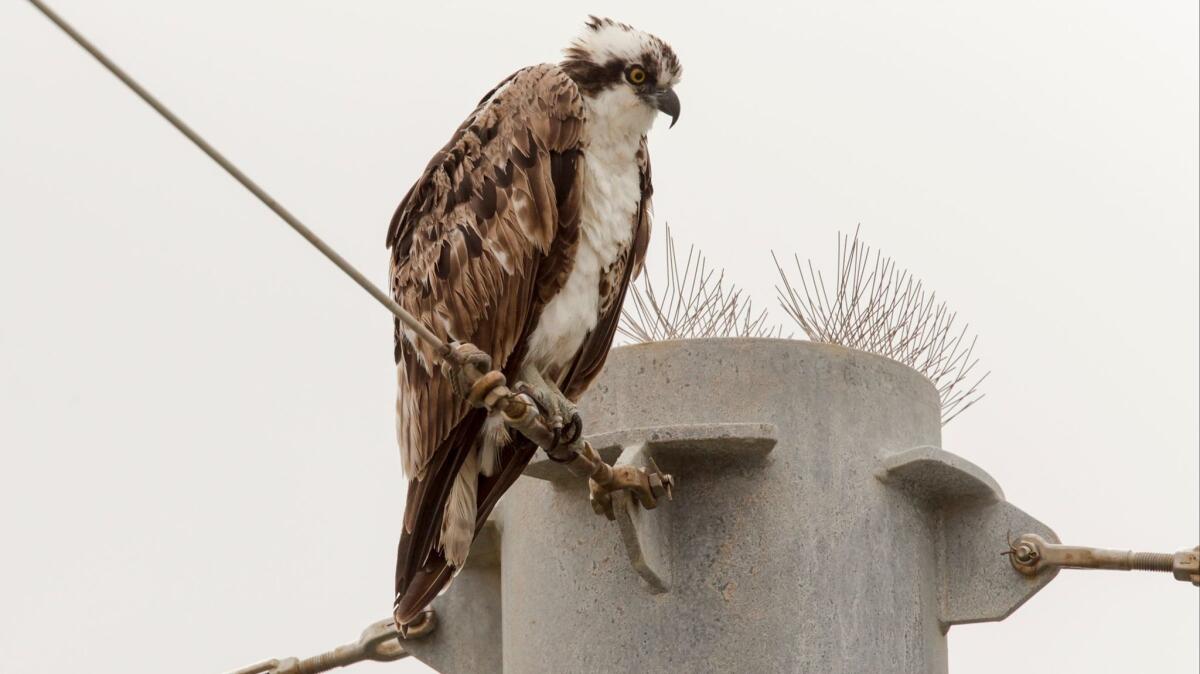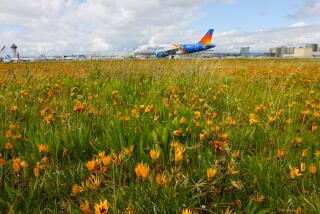Bird lovers get together to see how many species they can identify in L.A. in 24 hours
Dawn was a little more than an hour away on Saturday morning, when a small band of naturalists gathered beneath the boughs of a grove of gnarled oaks in Griffith Park, then stood stock-still and listened closely for the spooky calls of night birds.
Suddenly, a series of faint hisses and whistles alerted the group to screech owls flying overhead. High on a nearby tree, a great horned owl called out in loud, deep hoots.
That was music to the acutely refined ears of biologist Dan Cooper.

Cooper and his companions were just getting started in a marathon campaign to identify as many species of birds as possible in one day within Los Angeles city limits. They had their work cut out for them as they trudged through brush and fought freeway traffic to get from one birding hot spot to another in the 503-square-mile metropolis that is shaped like an open pipe wrench and home to 4 million people.
En route to the next location, MacArthur Park at the bustling corner of 7th and Alvarado streets near downtown, Cooper was only half-kidding when he announced, “If we don’t identify at least 100 species of birds by the end of the day, I’m hanging up my binoculars.”
The survey was among a range of activities held Saturday at dozens of locations throughout Los Angeles County to celebrate Audubon California’s third annual Bird LA Day. They included free nature walks, tours, bird-sketching workshops, photography lessons and chances to join Audubon experts in scanning parks, weedy vacant lots, rolling hills and beaches for sightings of the region’s surprisingly diverse assortment of avian species.
Participating organizations included Loyola Marymount University Center for Urban Resilience, UCLA Institute of the Environment and Sustainability, Theodore Payne Foundation, Friends of the Ballona Wetlands and the Natural History Museum of Los Angeles County.
The weird shape of Los Angeles’ legal boundaries was obstacle enough for members of the group including Cooper, 43; David Bell, 50, a software developer and lifelong birder; Teodelina Martelli, 16; and Dessi Sieburth, 14.
But the rules of their survey prevented them from counting any bird seen striding, preening, floating or flying outside city limits — even if it was a few feet away.
Overall, however, it was a bountiful day with plenty of birds, and even some rarities.
For example, biodiversity does not come easily at MacArthur Park, which is surrounded by buildings and pavement and many economically disadvantaged families. Yet, a rare Ross’s goose was found nibbling grass near a homeless encampment there.
“Remarkable!” Bell said, after the goose waddled over to peck at his hiking boots.

Los Angeles County lies along the Pacific Flyway, a major north-south route for migratory birds in the United States. In the spring and fall, the region draws millions of birds coming through Southern California on their way back to breeding grounds in the north or wintering grounds in the south.
Sprawling development over the last century has led to severe loss of habitat, yet Los Angeles County has recorded more than half of all the roughly 800 species of birds found across the United States.
Bell and Sieburth used spotting scopes to identify birds and call out their species to Martelli, who kept track of the tally.
“I’ve got both common and Pacific loon, eared grebe, Forster’s tern and a whimbrel,” Bell said, peering through a spotting scope at the White Point Nature Center, a patch of coastal highlands with panoramic views of the Pacific Ocean, just north of the Port of Los Angeles’ sprawling industrial empire of 400-foot-tall cranes, big rigs and container ships from around the world.
“California gnatcatcher!” added Cooper.
At nearby Cabrillo Pier, a wandering tattler made a brief but welcome appearance at the edge of a jetty, where crabs scuttled into hiding as black oystercatchers probed rocky crevices with their red-orange bills.
Half a mile offshore, Caspian terns and black-vented shearwaters wheeled in the air above the waves in search of fish.
Other highlights included a yellow-crowned night heron and Vaux’s swifts spotted at Ballona Wetlands, a 600-acre preserve near Culver City and just north of Los Angeles International Airport.
But the bird of the hour was a single killdeer found hunkered down on a Ballona Wetlands sand bar at 10:30 a.m.
“That otherwise common little shorebird was our 100th species of the day,” Cooper said. “By 1:30 p.m., we’d reached 110 species, and still hadn’t even surveyed the San Fernando Valley.
“So, no, I won’t be hanging up my binoculars.”
To read the article in Spanish, click here
»
More to Read
Start your day right
Sign up for Essential California for news, features and recommendations from the L.A. Times and beyond in your inbox six days a week.
You may occasionally receive promotional content from the Los Angeles Times.







